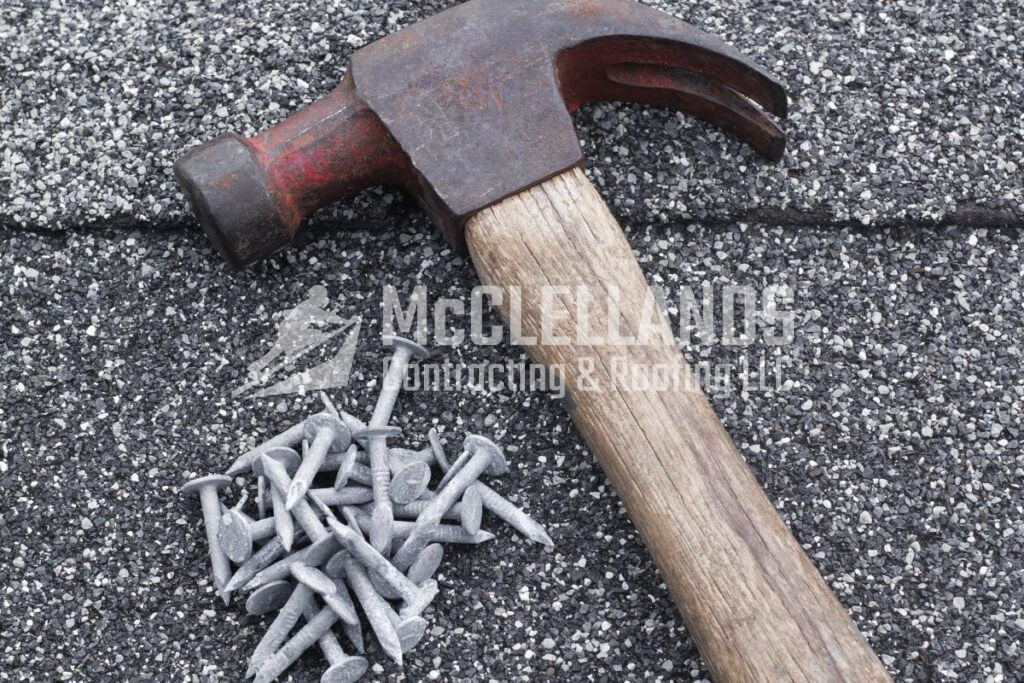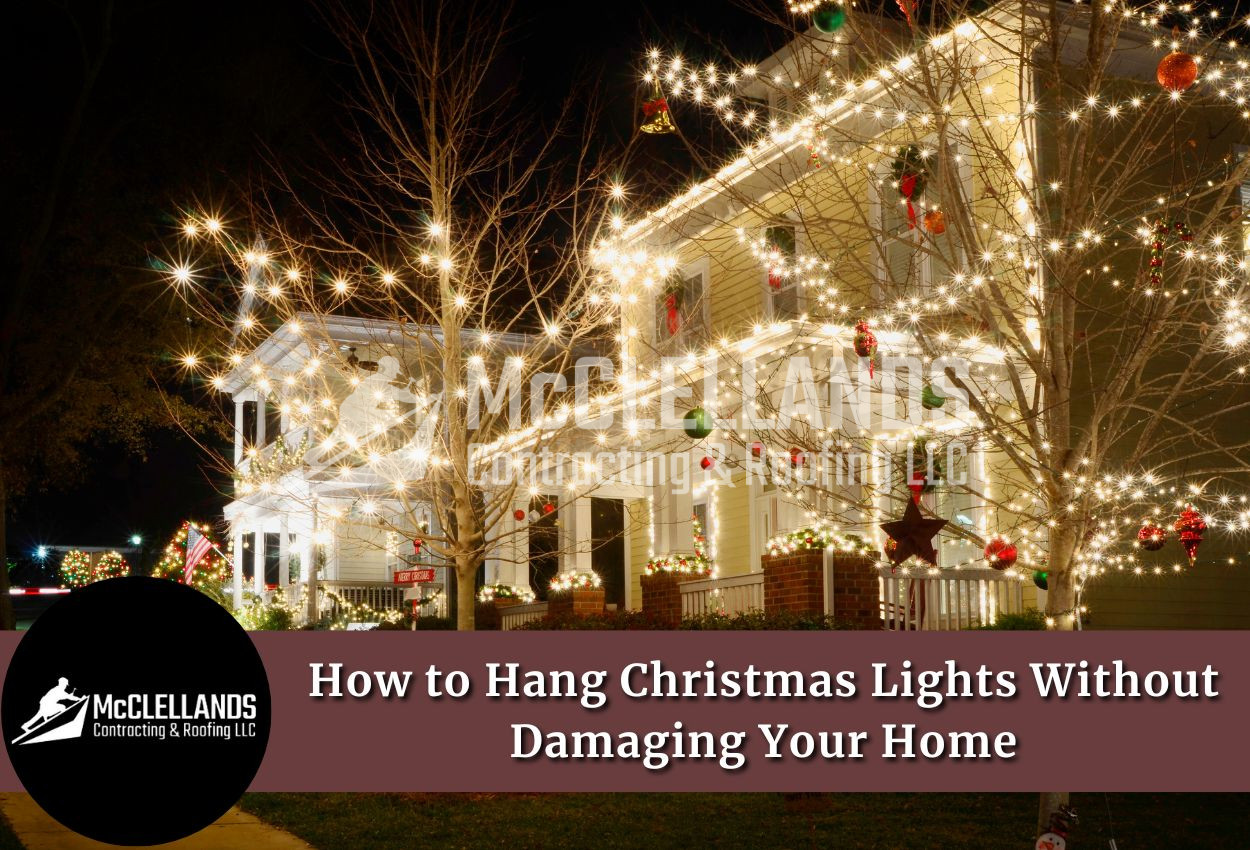Proper and accurate roof nail penetration is very important for a sturdy roof and to comply with building codes. Even a small mistake during installation can lead to other problems like rook leaks.
Roof nails generally have very strict guidelines for fastening. In this blog post, we will discuss whether roof nails should penetrate the roof deck, from the recommended penetration length to the right techniques.
Why Is Proper Roof Nail Penetration Important?
You might be wondering, "Are roofing nails really a big deal?" Well, choosing the right nails and placing them properly will protect your home and your wallet:
👉 It keeps the rain and snow out (and we get plenty of both here in Pittsburgh!)
👉 Your roof will last longer, which means more value for your investment.
👉 It keeps your warranty valid - and that's important for your peace of mind.
What Are The Basics of Nailing Roof Shingles?
Here are some general guidelines that must be followed while fastening shingles with roof nails.

1. Choose The Right Roofing Nails
For the Pittsburgh weather, you need roofing nails that don't rust. Look for galvanized steel, stainless steel, or aluminum roof nails. These will stand up to our humid summers and snowy winters.
2. Figure Out Where To Fasten The Roofing Nails
Your shingles have specific spots where the nails should go. It's usually right above the adhesive and below where the next shingle will overlap. Getting this right helps your roof stay leak-free and keeps shingles from flying off in strong winds.
3. The Number Of Nails To Be Used Per Shingle
Usually, you'll need four roofing nails per shingle. But if your roof is really steep or you live in a windy area, you might need six. It's always best to check with the shingle manufacturer and follow local building rules.
4. Nailing Them Properly On The Shingle’s Surface
When you're hammering in roof nails, make sure they go in straight and sit flush with the shingle. You don't want them sticking up or pushed in too deep. The goal is to have your roofing nails go about 3/4 inch into the wood under your shingles.
Cross Check Your Roof After Installation And Look For These Common Mistakes
Even the pros can mess up sometimes when installing roofing nails and shingles. Here are some common mistakes to check for and avoid:
#1 Using Nails that are Too Short or Too Long
The right roofing nail length is very important. If the roofing nails used are too short they might not properly hold the shingle, and if they are too long they can poke through the roof deck.
#2 Nails Fastened at the Wrong Spots
Each roofing shingle has a specific nailing zone. Missing this zone can lead to leaks or shingles blowing off in Pittsburgh's strong winds.
#3 Damaged Shingles
Overdriving roofing nails can tear the shingle, creating weak spots where water can seep in.
#4 Nails Sticking Up
Underdriven roof nails can work their way out over time, loosening your shingles.
#5 Ignoring Proper Roof Nail Penetration
Your roofing nails should penetrate at least 3/4 inch into the roof deck. This depth ensures a secure hold.
#6 Using the Wrong Type of Nails
Not all nails for roof shingles are created equal. Make sure you're using proper roofing nails that can withstand Pittsburgh's varying weather.
Also Check This Out: Roof Leaking from Nail Holes? Here’s How to Deal With Them!
What Are The Consequences of Incorrect Roofing Nail Penetration?
Improper roof nail penetrations or placement can lead to a variety of problems that can be expensive to address.
#1 Overdriving
Hammering roofing nails in too deep can cause significant issues. Shingles might become loose and fly off in strong winds. Water can also sneak in where the nail went through, leading to leaks inside your home.
#2 Underdriving
Not pushing roof nails in far enough is also a problem. The shingles won't be held down properly, so they could come off when it's windy or rainy. This makes your roof weaker and less able to keep water out.
#3 Misplacement
As we already discussed in this blog post, it’s crucial to place roofing nails correctly on the shingle. If the roof nails are too low, you might see them from the ground, which looks bad and can let water in through the sides of the nails.
If the roof nails are too high, they won't hold the shingles well. This could make them come loose more easily, especially in bad weather.
#4 Structural Issues
When roof nail penetration isn't done right, it can cause bigger problems for your whole house. It can weaken your entire roof, so it might not protect your home as well as it should. Water might get in, which can lead to mold or rotting wood.
Call McClellands Contracting and Roofing For Roof Installation Services In Pittsburgh, PA
If you are looking for high-quality roof installation services in Pittsburgh, PA, and other nearby areas, we are here to assist you. At McClellands Contracting and Roofing, we understand the importance of a durable roofing system to protect your home, so we only use best practices and quality materials.
Our team of skilled professionals knows exactly how to install roofing nails and shingles to make sure your roof stays strong and leak-free for years to come. We take great care in properly installing each roof nail, making sure they're not overdriven or underdriven. For guidance on your roofing project, give us a call today at (412) 353-5660.
Frequently Asked Questions
A. No, you should never reuse roofing nails. They can be bent or weakened, compromising the integrity of your new roof. Always use new nails for a secure and long-lasting installation.
A. A pneumatic coil roofing nail gun is the most efficient tool for the job. It provides consistent power and speed for proper nail penetration.
A. Look for signs like missing or loose shingles, leaks in your attic, or visible nail heads on your roof. If you suspect problems, it's best to contact a professional roofer for an inspection.
A. Yes, different roofing materials have specific nail penetration guidelines. For example, tile roofs may require longer nails than asphalt shingles. Always consult the manufacturer's instructions.
A. Yes, nail pops indicate that the nails are not properly secured and can lead to leaks and shingle damage. It's important to have them addressed by a roofing professional.




